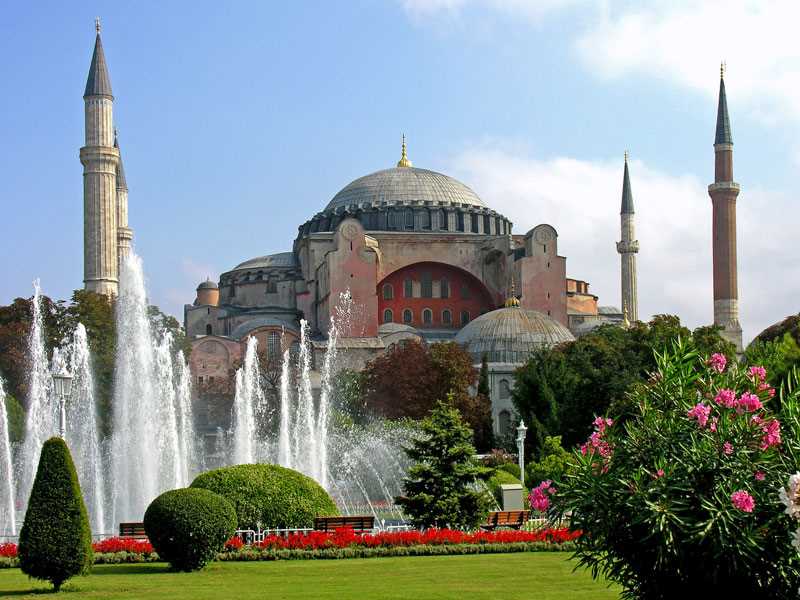Of the mosques that were originally a church. The most famous church and the first mosque where the Sultan Muhammad Al-Fatih prayers Friday after the conquest of Constantinople.
From church to mosque and then to the museum, Hagia Sophia, which means sacred wisdom and one of the masterpieces of Byzantine architecture and Ottoman decoration. Located in the Hagia Sophia Square opposite the Sultanahmet Mosque in the Fatih district of the European section of Istanbul.
The construction of the church dates back to 532 AD when the Byzantine Emperor Justinian began construction of the church in Istanbul. It took about 5 years to build. Throughout the building, the Hagia Sophia was a church for 916 years, then a mosque for 481 years. At the fall of the Ottoman Empire, The museum was built in 1931 and is now a site for visitors and a tourist museum. The chronology of the Hagia Sophia is thus:
- • Eastern Orthodox Cathedral (537-1204 AD)
- • Cathedral of the Catholic Church (1204-1261)
- • Eastern Orthodox Cathedral (1261 - 1453 AD)
- • Mosque of the Ottoman Empire (1453-1931)
- • Museum (1931 to the present day)
The call to prayer has been banned at the Hagia Sophia Museum since it was converted into a museum. Until 2012, the Hagia Sophia was first performed at the Hagia Sophia after 78 years on the anniversary of the conquest of Constantinople.
The construction of Hagia Sophia took 5 years. Among the dense trees in Istanbul, the dome of the Hagia Sophia overlooking the Bosphorus, with its minarets and its six minarets, stands against the Sultan's Mosque in the Sultanahmet Mosque. The dome is 32 meters wide and 55.6 meters high. It is built on four massive columns of 24.3 meters M. The walls of marble imported from many countries were built and the walls were decorated after being converted into a mosque by inscriptions of the Ottoman calligraphers. Four Ottoman-style cylindrical minarets were added to it, decorated with bright gold mosaics and colored stones.
The right section of the mosque covers the white marble stones extracted from the marble islands and the syrian marble stones extracted from the town of Qarahisar of the city of Afyon and the green Sumagil stones extracted from Tesliya and Mura. The square bars are from Egypt and the yellow marble is from Algeria. The roof of the mosque is covered with mosaics and the walls of the mosque are covered with colored stones, porphyry or porcelain.
The outer section contains: tombs and tombs of sultans, primary school, waterfall and tattoos wagons, hall rooms, minarets, external stents, treasury building, poor house, Al Fateh School.
The inner section contains: Central Hagia Sophia, mosaic paintings, frescoes, tiles, mihrab, pulpit, Sultan's room, Muezzin's room, Mahmud I library, marble grates, pillar pillars, Amptrur Gate and some other sections.








